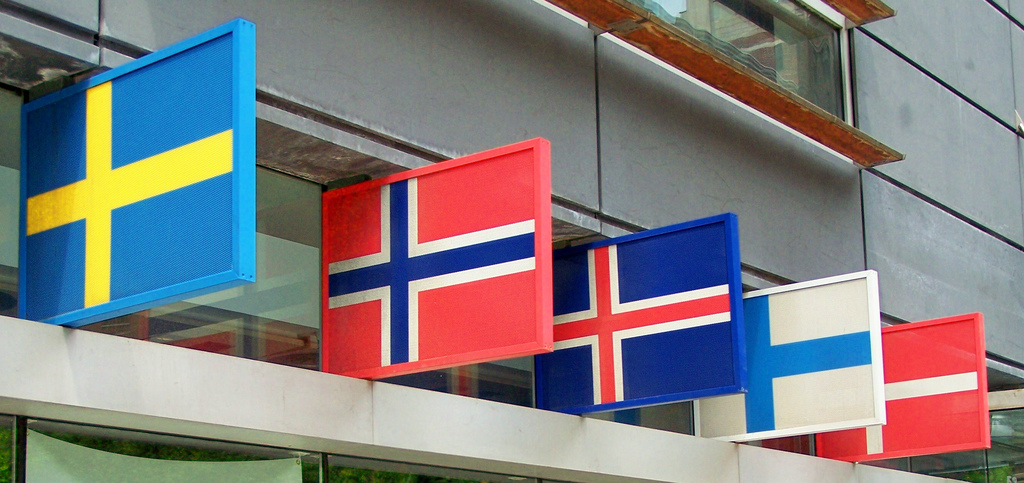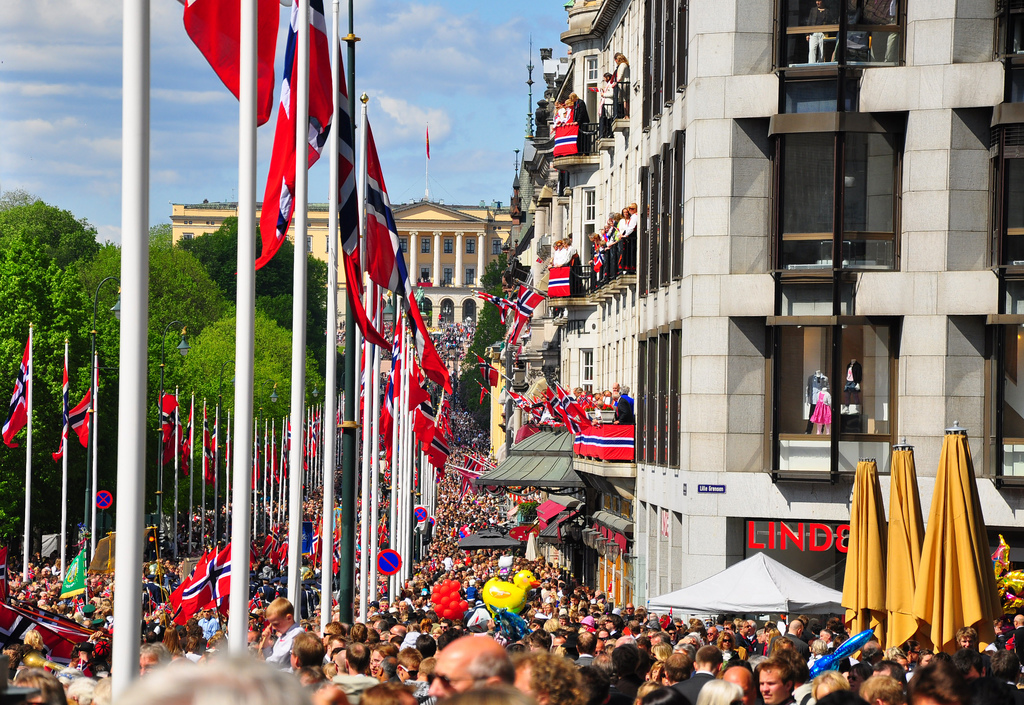Can the Nordic Model survive?
 Nordic countries flags, https://flic.kr/p/NPVVx.
Nordic countries flags, https://flic.kr/p/NPVVx.
The Nordic Model refers to a unique type of socio-economic system proper to the Nordic countries: Denmark, Finland, Iceland, Norway and Sweden. Although the economies and systems of these countries are not 100% similar, they still share enough to be grouped together in a model. It includes free market capitalism, a comprehensive welfare state, high public spending and collective bargaining. It has been admired for years by many outside observers for being a miracle recipe of success, seeing as the Nordic states are among the most economically prosperous in the world. However, criticism has begun to rise, with some calling this model socialism and others questioning its overall longevity, especially following the 2008 crisis. On top of this, challenges are mounting up; from an ageing population to the migrant crisis, the Nordic Model is tested more and more everyday. So is it really as desirable as many would think? Will it survive the changing global conditions of our time?
Today, the Nordic countries are among the most prosperous countries in the world, and one can find all of them amongst the top 30 richest countries in the world as of February 2017. As this ranking is based on the GDP per capita rather than simply the GDP of each country, it gives us a good idea of the effects of the Nordic welfare model on prosperity. They have also enjoyed significant growth over the last 25-30 years. They are well ahead of other EU states when it comes to productivity and innovation, making them attractive business places.
On top of being among the richest countries in the world, the Nordics are some of the happiest countries in the world, with Denmark, Iceland, Norway and Finland at the top of the list and Sweden following them closely. This is calculated based on different factors: caring, freedom, generosity, honesty, health, income and good governance. In all these categories are included more straightforward elements such as the GDP per capita, the presence of social support networks, healthy life expectancy at birth, the freedom to make life choices, perceptions of corruption, trust in government, and the list goes on.
In the end, the happiest countries on Earth at those who combine high living standards with effective governance in which people can have trust. The first condition is basically a given in the Nordic countries, with their high GDP per capita and welfare structure. What makes them special is their incredible fulfilment of the second condition, with all five of them being in the top 17 of the best-governed countries in the world. This is based on each country’s level of effective governance, democracy and political participation, and the rule of law, and is a part of the more encompassing Prosperity Index, in which the Nordics also top, the lowest being Iceland at number 13. All in all, the Nordic countries are among the best performing countries in the world, both in terms of GDP, living standards and happiness. Many have argued this is due to their Nordic Model, which has been going strong for decades now, and is hoped to last for many more to come.

Yet, nothing is more unsure, as the Nordic Model is facing many challenges today. It is very vulnerable to increasing unemployment and to the ageing of the population, as it is based on a tax-financed welfare state, which provides all public services such as health, education, childcare, etc. This would be put in danger if the working population were to decrease while the beneficiaries of aids increase, making spending on welfare rise faster than overall GDP. On top of this, globalization, especially that of labour, is a threat to the welfare state as well, as it reduces the size of the working force through emigration and increases the amount of people needing unemployment or retirement benefits. It has become increasingly easy and attractive for younger generations to pursue jobs abroad, despite the competitive job markets in the Nordic. In their book The Nordic Model, Andersen and co give the example of people leaving to find jobs elsewhere, but come back at the age of retirement to enjoy the social benefits offered by the welfare state. It becomes more and more simple for people to benefit from the system without contributing to it, and these behaviours create a true financial strain on the welfare state.
So can the Nordic Model survive? It has existed for a while now, and has proved its flexibility and ability to change in many instances, such as with their successful integration of new technologies into their economy. However, in order to survive in today’s world, it will have to adapt to the changing environment and conduct reforms to fight challenges like the ones mentioned previously. Some good ideas for reforms are promoting new kinds of jobs to replace those which will disappear with globalization and technological development (such as creative work, derived from new technologies and new ways of communicating), and an emphasis on global cooperation to solve global problems. There could also be privatization of some social services such as healthcare (partial at least), or measures to promote careers starting earlier, increasing the retiring age, and deterring early retirement, among others. Proposed solutions such as higher taxes (in countries where taxes are already quite significant) or making more children have been researched and cannot help solve some of the major problems, as the first one will have detrimental effects on entrepreneurship and economic growth, and the second would lead to more children to support in the educational system just as a large generation is going into retirement, thus increasing the strain on the welfare system.
In the end, we can say the Nordic Model is and has been performing well for the past 25 to 30 years. However, our world has been changing dramatically lately, and has made reforms necessary for the Nordic countries, as global challenges of unemployment and changing demographics are beginning to be felt there too. This unique welfare model can survive, on the sole condition that it can implement the necessary reforms to face these challenges, and continue being as efficient and productive.
Edited by Benjamin Aloi
